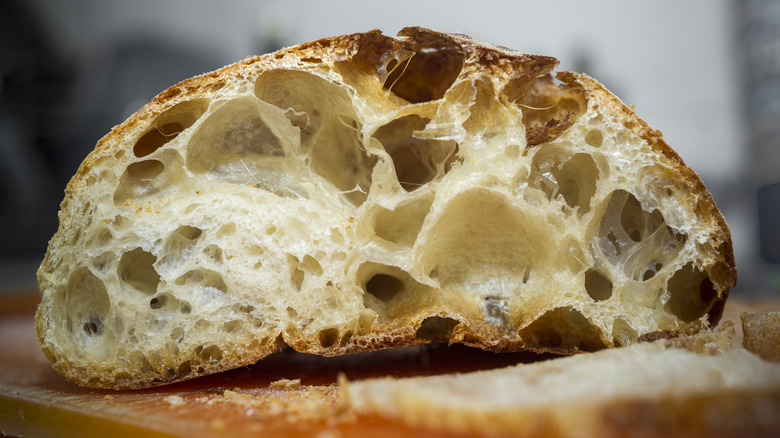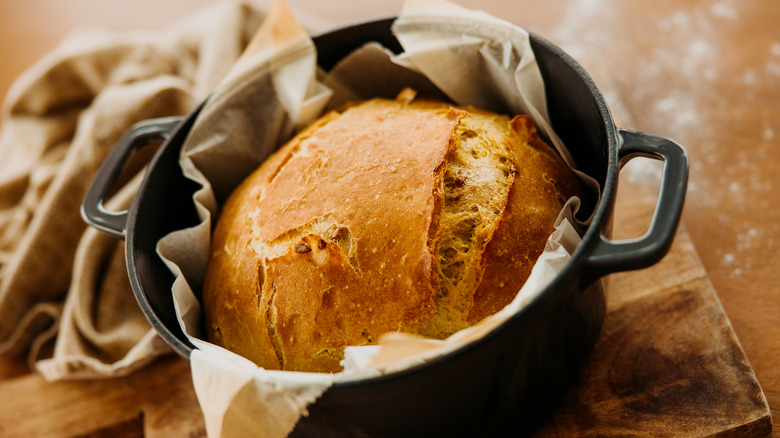Ice Cubes Are The Easiest Way To Achieve A Crisp Crust On Homemade Bread
Making a good homemade loaf can be a satisfying endeavor. Not only do you get to enjoy the warm, crusty results fresh out of the oven, but your home also smells of freshly baked bread. Unfortunately, all that effort can be for naught if the loaf itself doesn't turn out well. Sure, there are ways to salvage a less-than-perfect loaf, which you can always repurpose into croutons, bread crumbs, or even as a base for hearty Italian Ribollita soup. However, the best outcome for many styles of bread is a loaf with a crackling exterior crust and pillowy interior crumb. Following the bread recipe to the dot combined with a few tricks that experienced bakers have up their sleeves can result in homemade bread that's as good as what you can get at a local bakery.
A crispy crust with a fluffy interior is the hallmark of good bread, at least as far a varieties like sourdough are concerned. Interestingly, a few humble ice cubes can easily help you achieve this. In fact, ice cubes come in handy in all sorts of unexpected ways — these are also the key to grilling juicy burgers.
When it comes to baking bread, ice cubes can provide extra steam that helps keep the air surrounding the bread moist. Pizza and bread making expert Nicole Bean, who owns and operates two pizzeria locations in Houston with her family called Pizaro's Pizza Napoletana explained how ice cubes can give homemade bread the perfect crispy crust.
Ice cubes provide moisture for a crispy bread crust
"Ice cubes are crucial to creating humidity and steam in your home oven where most ovens do not produce such qualities," says Nicole Bean. Without ice cubes, "You can still create a crisp crust by adjusting baking temperatures, but it has to be done strategically. This involves baking at a higher temperature to get a crisp exterior then reducing the temperature and sometimes covering the top with tin foil while the bake finishes at the lower temperature."
To use ice cubes when baking bread, simply put them in a separate tray in the oven when you put the dough in. The humidity created by the melting ice ensures that the bread's outer surface, which is most directly subjected to the oven's heat, remains moist and supple instead of hardening too fast. This helps the loaf expand, becoming fluffy on the inside and stretching that outer layer thin. The result is a crackling, crispy crust with a soft interior — the qualities we all dream of in a homemade loaf. Once you get the hang of it, you can also upgrade homemade bread with peach skins and other seasonal delights to surprise eaters.
Dutch ovens are also great for baking bread because they trap moisture. Here, too, the baking expert recommends putting a few ice cubes into the Dutch oven along with the dough to balance the bread's expansion and get a nice crust. However, Bean warns against putting in too many ice cubes, which could result in a soggy, undercooked loaf.

